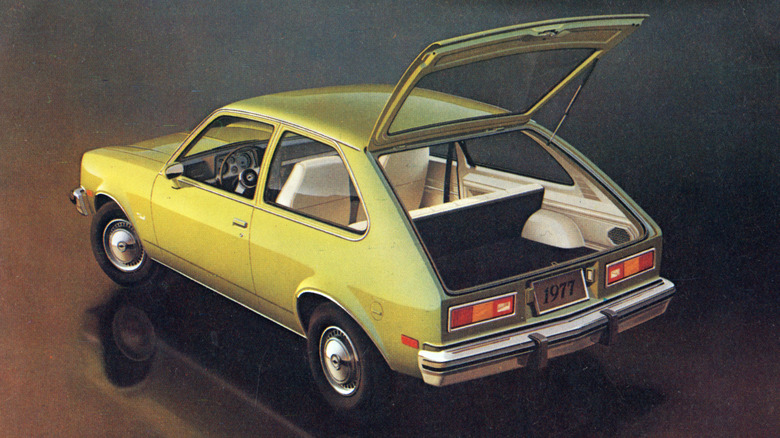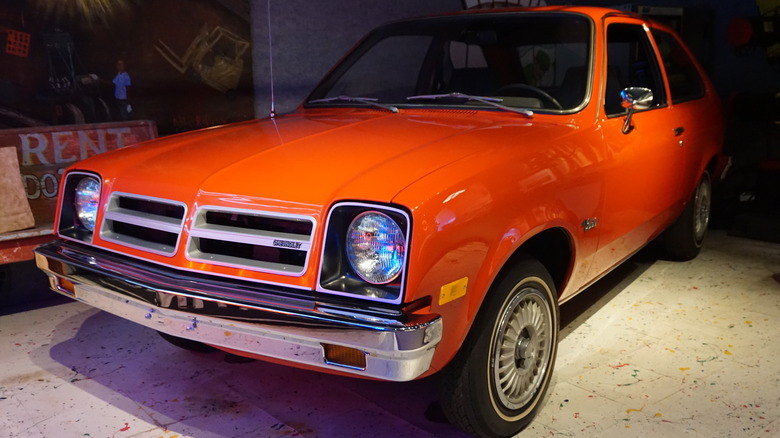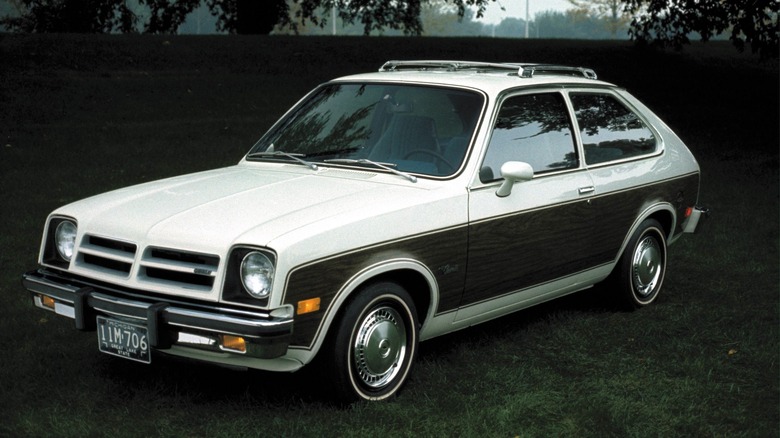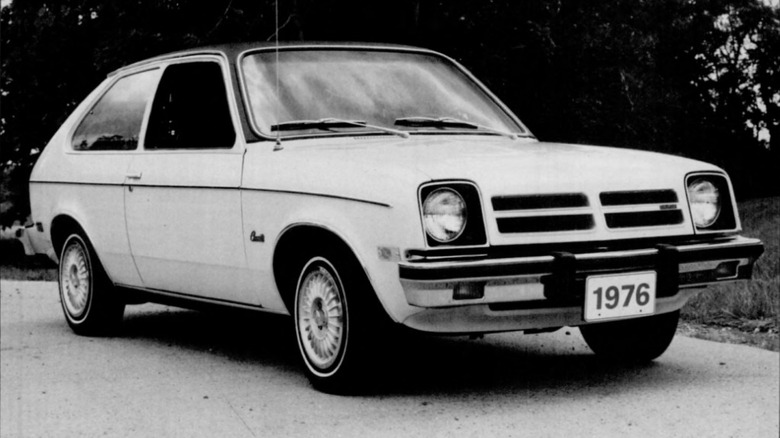Why Chevrolet's Chevette Was Doomed From The Start
Depending on who you ask, the Chevrolet Chevette was either an unmitigated disaster for not only General Motors and Chevy but the American car industry as a whole, or it was an uninspiring and misunderstood car that could have been executed better. Either way, the Chevette nameplate has not been associated with excellence in the same way as the Camaro or Corvette.
The Chevette started out on the wrong foot, essentially right out of the gate, as it was born into adversity. The United States was going through the now infamous oil crisis of the mid-1970s, and American cars were, for the most part, huge and inefficient compared to smaller Japanese cars that were slowly entering the market. This was just a few years before brands like Honda and Toyota completely dominated the American landscape.
Chevrolet came up with the Chevette, a car that wasn't as big as a cruise ship and didn't consume gasoline like it had a hole in the gas tank. The Chevette accomplished those two things, but whether or not the Chevette was a real competitor throughout its production cycle is a different question entirely.
Certainly cheap
The car itself had origins in GM's T-Car platform, a vehicle that was designed for international markets and not the United States. The Chevrolet Chevette was first birthed for the 1976 model year, still a few years before other compact automotive punchlines like the Chrysler line of economically-focused front wheel drive K-Cars. As people started getting their hands on one, the Chevette wasn't a failure and was somewhat well-regarded by contemporary reviewers like Car and Driver. It was inexpensive, retailing for $2,899 for the back seat-less base model (about $16,387 in today's money, slightly over the MSRP of a 2023 Nissan Versa). That price would later rise to breach $3,000 by the 1977 model year.
Early Chevettes had a choice of engines that included 1.4-liter and 1.6-liter four-cylinders, but the 1.4-liter variant was quickly axed after a few years because it succeeded only in making lawnmowers jealous with its 52 horsepower. The 60 horsepower 1.6-liter engine wasn't much better but would remain the only gasoline engine choice for customers during the entirety of the Chevette's life. A diesel engine was briefly offered, but MotorTrend says it was "unpopular (and even slower)."
[Featured image by Michael Barera via Wikimedia Commons | Cropped and scaled | CC BY-SA 4.0]
Pitiful performance
Performance numbers are about what you would expect from a car with less than half the horsepower of Chevy's current least expensive car, the Trax. It wasn't a record breaker by any stretch of the imagination, and to call it a "well-performing car" would take gold-medal levels of mental gymnastics.
It took 15 seconds for a 1977 Chevette to reach 60 miles per hour, which is already very slow. To hit 70 miles per hour, it would take 24.6 seconds. In racing, even fractions of a second can feel like minutes or even hours. 24.6 seconds to reach barely over highway speed might as well be measured by carbon dating and geological records.
Yet, the car's interior wasn't a terrible place to be. It was a hatchback, after all, which offers flexibility if you have a lot of cargo. A four-door version came around in 1978 and became relatively popular, even managing to outsell models from Ford and Chrysler by a huge margin, with 451,000 Chevettes leaving the dealership in 1980. 2.8 million Chevettes would see the light of day when it was all said and done.
A definite dinosaur
Calling the Chevette "fine" was the highest praise you could give the car. The Chevette's demise and now infamous reputation came from Chevy's inability to change the car in any meaningful way. Chevrolet made the car from 1975 to 1987 and changed very little. In the same period, vehicles like the Honda Accord came onto the scene from Japanese manufacturers. Chrysler developed cars like the Aries K and invented the minivan, and Ford was able to produce the Escort. All of those cars virtually eliminated the dinosaur Chevette from the competition.
While it's unequivocally a good thing that Chevy decided to put the hard work in and make a car that wasn't as environmentally disastrous as a deforestation equipment convention, the automaker seemed to stop caring when it left the line. Chrysler's maligned PT Cruiser would befall the same fate years later. It wasn't a decisive action that doomed the Chevette. It was inaction.



